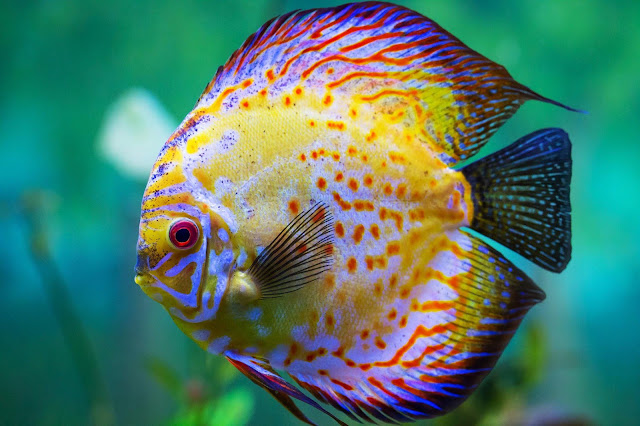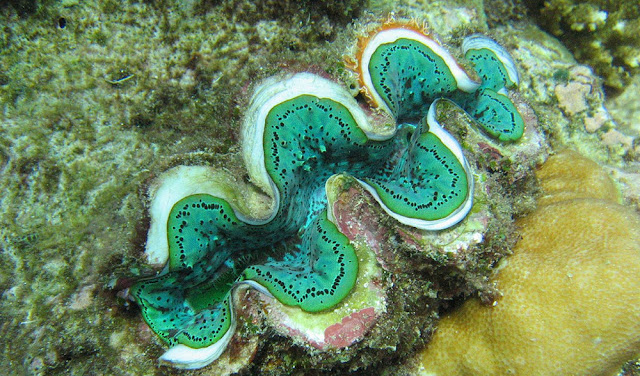Did you know…? Under our oceans and waterways, there’s a world of living color! Purples, greens, reds and more create a living rainbow under the sea, with hues that defy nature and seem almost impossible. Here are a few examples of this striking sea life!
Portuguese Man O’ War
Devils of the sea, the Portuguese man o’ war lures you in with its gorgeous purple-blue translucence, only to inflict an incredibly painful, venomous sting when physically encountered! This species is predatory. It uses its feeding tentacles to paralyze small fishes, pelagic crustaceans, and other invertebrates. It can also give humans a painful reminder of its ability– just ask President of Sub Sea Systems, Jim Mayfield, who felt the excruciating sting firsthand during a dive in Mexico!
The man-of-war has no means of propulsion, so it simply drifts, riding the currents of the ocean. They frequently form legions consisting of over 1000 colonies that float around together. Because they drift along on (somewhat) predictable winds and ocean currents, it’s possible to anticipate where and when the creatures will show up. For example, the Gulf Coast’s man o’ war arrive in the winter months.
Hippo (Blue) Tang
The hippo tang is so beautiful, it was used as a model…for the cartoon character, Dory, in Pixar/Disney’s “Finding Dory”!
This vibrant yellow, blue and black fish, found in Indo-Pacific waters, helps control the algae population on sponges, turtles, and coral reefs. Juvenile blue tang are herbivores (like Bruce, the shark), and play a major role in keeping algae from getting out of control.
Like all surgeonfish, the hippo tang can extract a razor-sharp caudal spine located at the side of its fin when threatened. They thrash their bodies and use their “scalpels” to cut whatever is trying to harm them. Obviously, Pixar decided to leave this trait out of Dory’s character.
Mandarin Goby
By far one of the most mesmerizing fish, the vibrant mandarin goby is found in waters from the Ryukyu Islands off the coast of Japan, to warm Australian reefs.
The Mandarin goby is not just beautiful - it’s also a complex creature. This goby is covered in tiny spines that can inject toxic mucus into anyone who tries to handle it. It contains two types of secretious cells on its colorful epidermis – one that produces a thick mucus coating to protect it from the elements, and another that produces a toxin to protect it from predators. Not only is this toxic mucus coating dangerous, particularly if it makes it into a predator’s open wound, but it smells disgusting! The stink is not incidental. The mandarin goby needs the odor and the spines, because it lacks one of the most basic protective measures in the marine world: it doesn’t have scales.
Discus
Native to the Amazon River Basin in South America, discus are patterned in shades of green, red, brown, and blue. Highly social, discus typically form groups that may number many dozens of individuals.
They form pair bonds when they are about 75% of their adult size, and tend to remain life-long partners. Discus are great parents, and even secrete a slimy substance through their scales for their fry to feed off for the first couple of weeks of life.
The grace and elegance of the discus has fascinated fish enthusiasts from around the world since they were first discovered in the 1800s. However, excessive captive breeding has led to the fading of their dark stripes. Today, the discus is listed as a threatened species, meaning that if the situation progresses unchanged, the discus will be threatened with extinction in the wild in the near future.
Ribbon Eel
The chameleon-like ribbon eel swaps out its colors as it ages. The juveniles and young adults, which are all born male, are jet black with a yellow dorsal fin. In adult males, the black is replaced by blue, and adult females are entirely yellow or yellow with some blue to the posterior.
These carnivorous eels feed on small fishes like guppies, fathead minnows, and other crustaceans. They use their clamped nostril to attract the prey and then using their strong jaw, they catch them. Their dragon-like appearance makes them one of the most intriguing creatures to observe, but they are typically seen with only their heads protruding out of reefs and coral.
Garibaldi
The vivid orange garibaldi, the state fish of California, is the largest member of the damselfish family. In their natural habitats, Garibaldi’s are solitary fish and are very territorial. The males carry the spores of specific species of algae in their cheeks, and plant it on flat rock surfaces. This algae is then groomed by the fish, who defends it against encroaching males and sea urchins. In spring, females lay eggs, which hook onto the algae that the males tended.
Garibaldi have been known to charge at divers, perhaps in an attempt to protect their territory and defend eggs. When disturbed or approached, Garibaldi fish emit a thumping sound, which can sometimes be heard by divers.
Blue-ringed Octopus
Dazzling yet deadly, the blue-ringed octopus is not the innocent sea occupant it appears to be. This golf-ball sized creature’s venom is 1,000 times more powerful than cyanide and can kill 26 humans within minutes. It’s no surprise that it’s recognized as one of the most dangerous animals in the ocean.
Native to the Pacific Ocean, the blue-ringed octopus can be found in the soft, sandy bottom of shallow tide pools and coral reefs. When not seeking food or a mate, blue-ringed octopuses often hide in crevices, shells or marine debris. If you catch them outside of their cozy hiding spots, it’s easy to see how the animal gets its name: when threatened, bright blue rings appear all over its body as a warning signal to potential predators.
Fortunately, the blue-ringed octopus isn’t aggressive; it’s only likely to bite humans if cornered or handled.
Giant Clam
Not only could you take an afternoon nap inside its shell, the giant clam also dons an amazing array of colors. Its mantle is usually a mixture of yellow, red, green, blue, pink and brown. This massive mollusk can reach 4 feet in length and weight up to 500 pounds!
Like most corals, some anemones, and other reef organisms, giant clams utilize a combination of methods to obtain food. The majority of their energy is derived from symbiotic algae living within their cells, providing the clams with excess energy that they make via photosynthesis (the use of sunlight to convert carbon dioxide into food/energy). In return, the algae have a safe place to live and receive the nutrients necessary to photosynthesize. The beautiful colors characteristic of individual giant clams are actually a result of the symbiotic algae.
The seductive colors of the giant clam are somewhat wasted, because giant clams are hermaphrodites. That means that one animal has both male and female reproductive organs and can self-reproduce.
Want to check out more amazing sea life? Visit our Pinterest board "The Amazing Ocean"











No comments:
Post a Comment
Thank you for your comment!